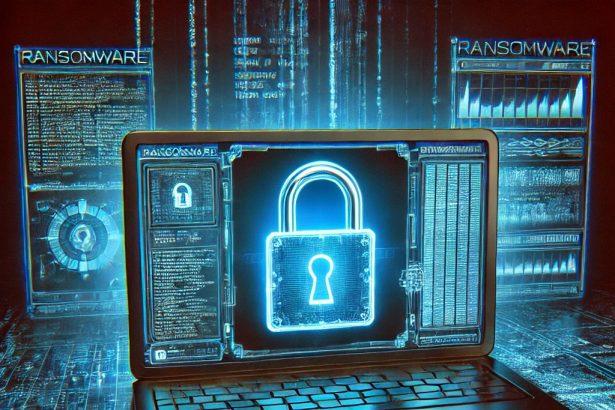Warlock Group ransomware is a newly emerging and highly impactful crypto‑virus that has struck at least 145 organizations globally via Microsoft SharePoint zero‑day vulnerabilities. This threat encrypts critical files, demands ransom, and threatens publication of stolen data—posing serious risk to victims.
Threat Overview
| Detail | Warlock Group Ransomware |
|---|---|
| Threat type | Ransomware, Crypto‑Virus |
| Encrypted file extension | .x2anylock |
| Ransom note file name | How to decrypt my data.txt (or .txt) |
| Detection names | X2anylock variant, Warlock Client ransomware |
| Symptoms of infection | File names appended with .x2anylock, ransom note on desktop, encrypted inaccessible data |
| Damage & distribution methods | Data encryption, possible data theft, double‑extortion; distributed via phishing email attachments, malicious installers, fake update pop‑ups, exploit of SharePoint zero‑days (ToolShell CVE‑2025‑49704/49706/53770/53771) |
| Danger level | High — mass encryption, double‑extortion, state‑actor sophistication |
| Removal tool | SpyHunter (download page) |
Evaluation of the Threat
How I got infected
Attackers exploit critical SharePoint zero‑day vulnerabilities—commonly known as ToolShell (CVE‑2025‑49704, CVE‑2025‑49706, and bypasses CVE‑2025‑53770/53771)—to deploy a web shell (spinstall0.aspx). This web shell enables command execution on victim servers, enabling lateral movement, credential theft using Mimikatz, and eventual mass deployment of ransomware via Group Policy Objects (GPOs) .
In non-enterprise contexts, infection may occur through phishing emails, malicious attachments, cracked installers, or fake update pop‑ups .
What does it do
Once inside, Warlock ransomware encrypts files using strong encryption, appending .x2anylock to filenames. A ransom note named How to decrypt my data.txt is placed, demanding payment and threatening to leak stolen data if not paid. Victims may be given a chance to decrypt a file to prove authenticity. The variant may also steal data before encryption for double‑extortion purposes .
Attackers may disable Microsoft Defender, use processes like w3wp.exe, schedule persistence tasks, and leverage tools like PsExec, Impacket, and Mimikatz for credential theft and lateral spread .
Should you be worried for your system
Yes. This is a high‑risk ransomware threat backed by advanced tactics, including weaponizing zero‑day SharePoint flaws and employing sophisticated persistence, credential theft, and double‑extortion techniques. Victims span government agencies, large corporations, and technology firms worldwide. The stress and potential financial, reputational, and data loss impacts are significant.
Organizations must apply patches rapidly, monitor for ToolShell activity, and use behavioral threat detection tools. Individuals and smaller entities should scrutinize email attachments, avoid pirated software, and keep software up to date.
Ransom Note Text
“We are [Warlock Group], a professional hack organization. We regret to inform you that your systems have been successfully infiltrated by us, and your critical data, including sensitive files, databases, and customer information, has been encrypted. Additionally, we have securely backed up portions of your data to ensure the quality of our services.”
Full note continues with payment instructions via encrypted chat on dark web or qTox, threats of permanent data loss or publication if ransom is not paid .
Manual Ransomware Removal Guide
Warning: Manual removal is complex and risky. If not done correctly, it can lead to data loss or incomplete removal of ransomware. Only follow this method if you are an advanced user. If unsure, proceed with Method 2 (SpyHunter Removal Guide).
Step 1: Disconnect from the Internet
- Unplug your Ethernet cable or disconnect Wi-Fi immediately to prevent further communication with the ransomware’s command and control (C2) servers.
Step 2: Boot into Safe Mode
For Windows Users:
- For Windows 10, 11:
- Press Windows + R, type
msconfig, and hit Enter. - Go to the Boot tab.
- Check Safe boot and select Network.
- Click Apply and OK, then restart your PC.
- Press Windows + R, type
- For Windows 7, 8:
- Restart your PC and press F8 repeatedly before Windows loads.
- Select Safe Mode with Networking and press Enter.
For Mac Users:
- Restart your Mac and immediately press and hold the Shift key.
- Release the key once you see the Apple logo.
- Your Mac will start in Safe Mode.
Step 3: Locate and Terminate Malicious Processes
For Windows Users:
- Press Ctrl + Shift + Esc to open Task Manager.
- Look for suspicious processes (e.g., unknown names, high CPU usage, or random letters).
- Right-click on the process and select End Task.
For Mac Users:
- Open Activity Monitor (Finder > Applications > Utilities > Activity Monitor).
- Look for unusual processes.
- Select the process and click Force Quit.
Step 4: Delete Malicious Files
For Windows Users:
- Press Windows + R, type
%temp%, and hit Enter. - Delete all files in the Temp folder.
- Navigate to:
C:\Users\[Your Username]\AppData\RoamingC:\Users\[Your Username]\AppData\LocalC:\Windows\System32
- Look for suspicious files related to the ransomware (random file names, recently modified) and delete them.
For Mac Users:
- Open Finder and go to Go > Go to Folder.
- Type
~/Library/Application Supportand delete suspicious folders. - Navigate to
~/Library/LaunchAgentsand remove unknown.plistfiles.
Step 5: Remove Ransomware from Registry or System Settings
For Windows Users:
Warning: Incorrect changes in the Registry Editor can damage your system. Proceed with caution.
- Press Windows + R, type
regedit, and hit Enter. - Navigate to:
HKEY_CURRENT_USER\SoftwareHKEY_LOCAL_MACHINE\Software
- Look for unfamiliar folders with random characters or ransomware-related names.
- Right-click and select Delete.
For Mac Users:
- Go to System Preferences > Users & Groups.
- Click on Login Items and remove any suspicious startup items.
- Navigate to
~/Library/Preferencesand remove malicious.plistfiles.
Step 6: Restore System Using System Restore (Windows) or Time Machine (Mac)
For Windows Users:
- Press Windows + R, type
rstrui, and hit Enter. - Click Next, choose a restore point before the infection, and follow the prompts to restore your system.
For Mac Users:
- Restart your Mac and hold Command + R to enter macOS Utilities.
- Select Restore from Time Machine Backup.
- Choose a backup prior to the ransomware infection and restore your system.
Step 7: Use a Decryption Tool (If Available)
- Visit No More Ransom (www.nomoreransom.org) and check if a decryption tool is available for your ransomware variant.
Step 8: Recover Files Using Backup
- If you have backups on an external drive or cloud storage, restore your files.
Automatic Ransomware Removal Using SpyHunter
If manual removal seems too risky or complicated, using a reliable anti-malware tool like SpyHunter is the best alternative.
Step 1: Download SpyHunter
Download SpyHunter from the official link: Download SpyHunter
Or follow the official installation instructions here:
SpyHunter Download Instructions
Step 2: Install SpyHunter
- Open the downloaded file (
SpyHunter-Installer.exe). - Follow the on-screen prompts to install the program.
- Once installed, launch SpyHunter.
Step 3: Perform a Full System Scan
- Click on Start Scan Now.
- SpyHunter will scan for ransomware and other malware.
- Wait for the scan to complete.
Step 4: Remove Detected Threats
- After the scan, SpyHunter will list all detected threats.
- Click Fix Threats to remove the ransomware.
Step 5: Use SpyHunter’s Malware HelpDesk (If Needed)
If you are dealing with a stubborn ransomware variant, SpyHunter’s Malware HelpDesk provides custom fixes to remove advanced threats.
Step 6: Restore Your Files
If your files are encrypted:
- Try No More Ransom (www.nomoreransom.org) for decryption tools.
- Restore from cloud storage or external backups.
Preventing Future Ransomware Attacks
- Keep backups on an external hard drive or cloud storage.
- Use SpyHunter to detect threats before they infect your system.
- Enable Windows Defender or a trusted antivirus program.
- Avoid suspicious emails, attachments, and links.
- Update Windows, macOS & software regularly.
Conclusion
Warlock Group ransomware represents a severe cyber‑threat combining zero‑day exploitation, advanced encryption, and data theft. Its ability to target enterprise SharePoint servers via ToolShell and the likelihood of double‑extortion make it especially dangerous. A strong defense strategy—covering patch management, endpoint protection, user training, and incident detection—is critical. Victims should consider professional removal tools like SpyHunter to eliminate the infection.




